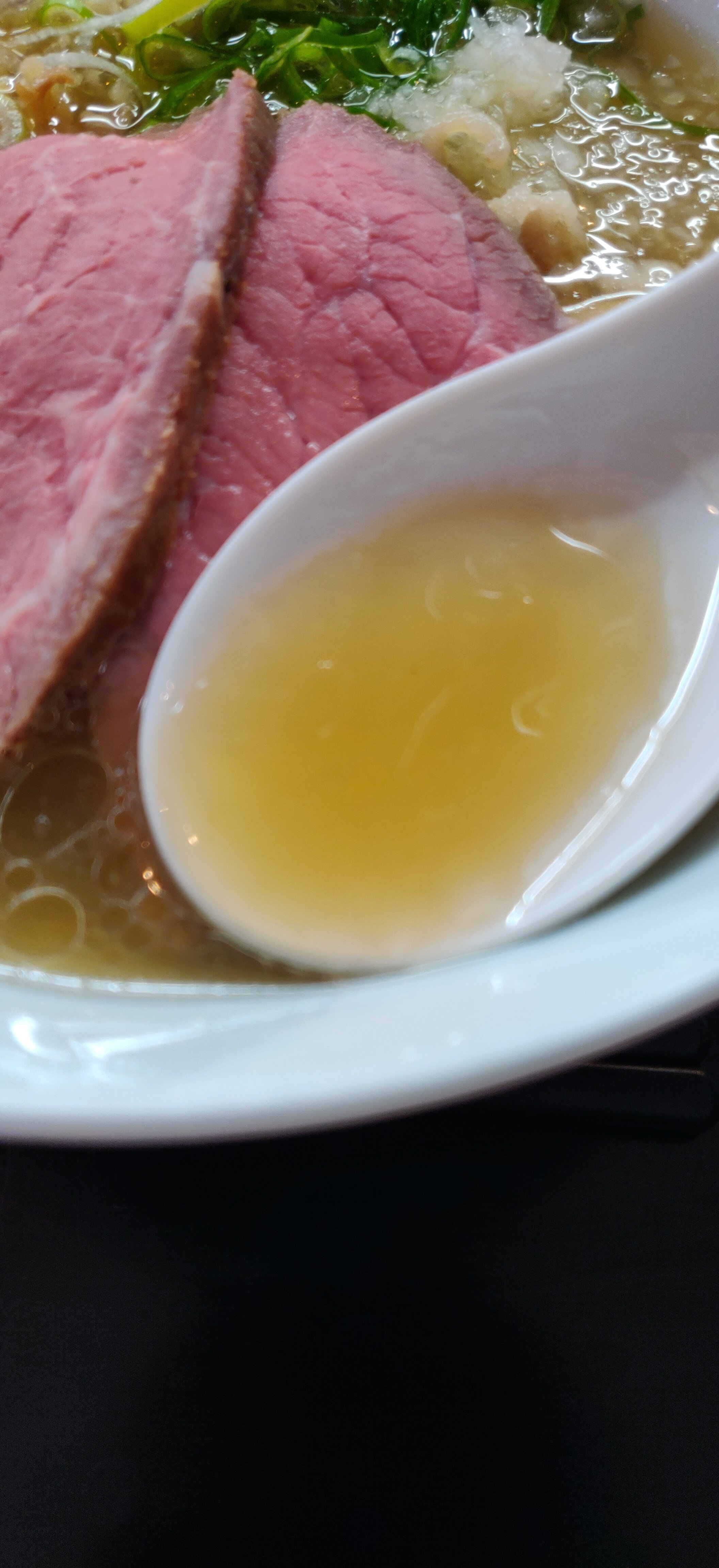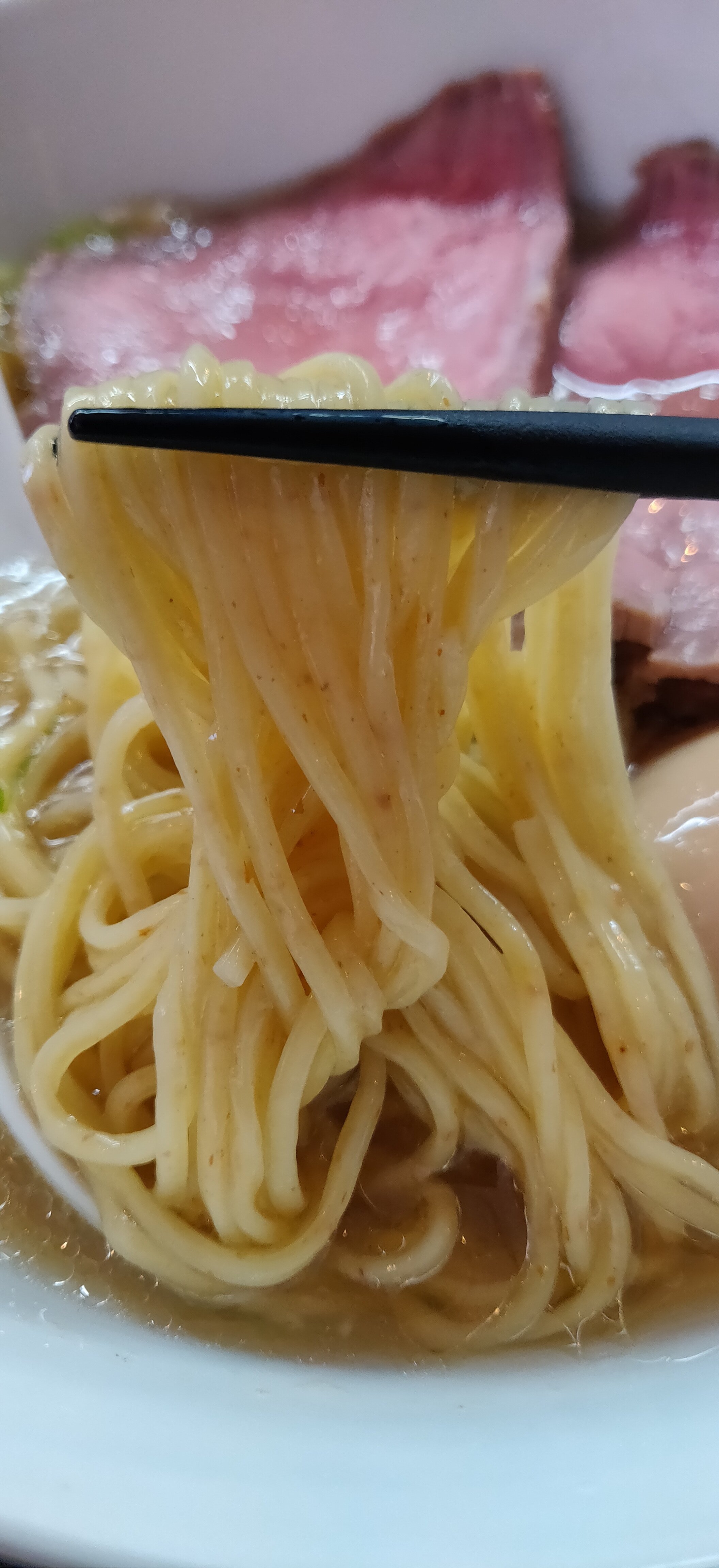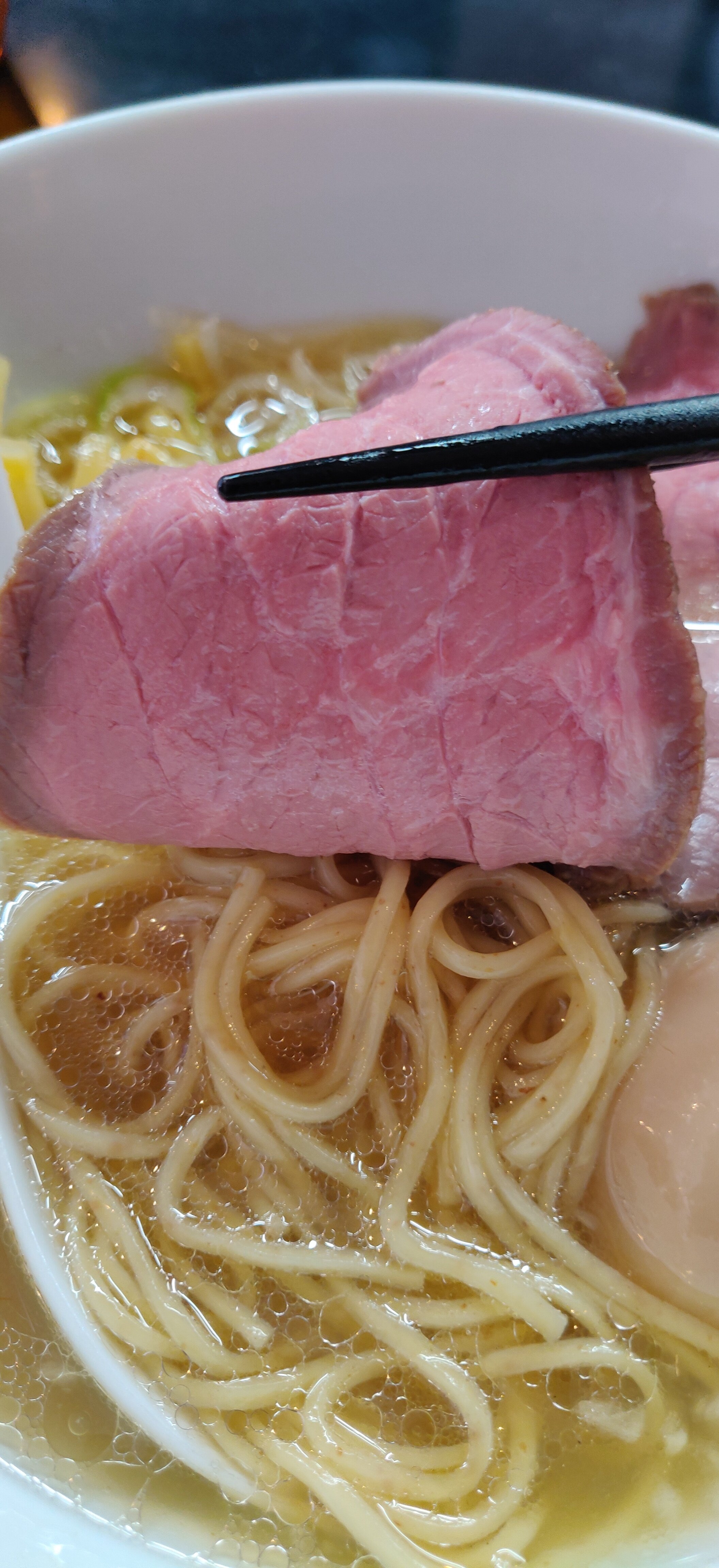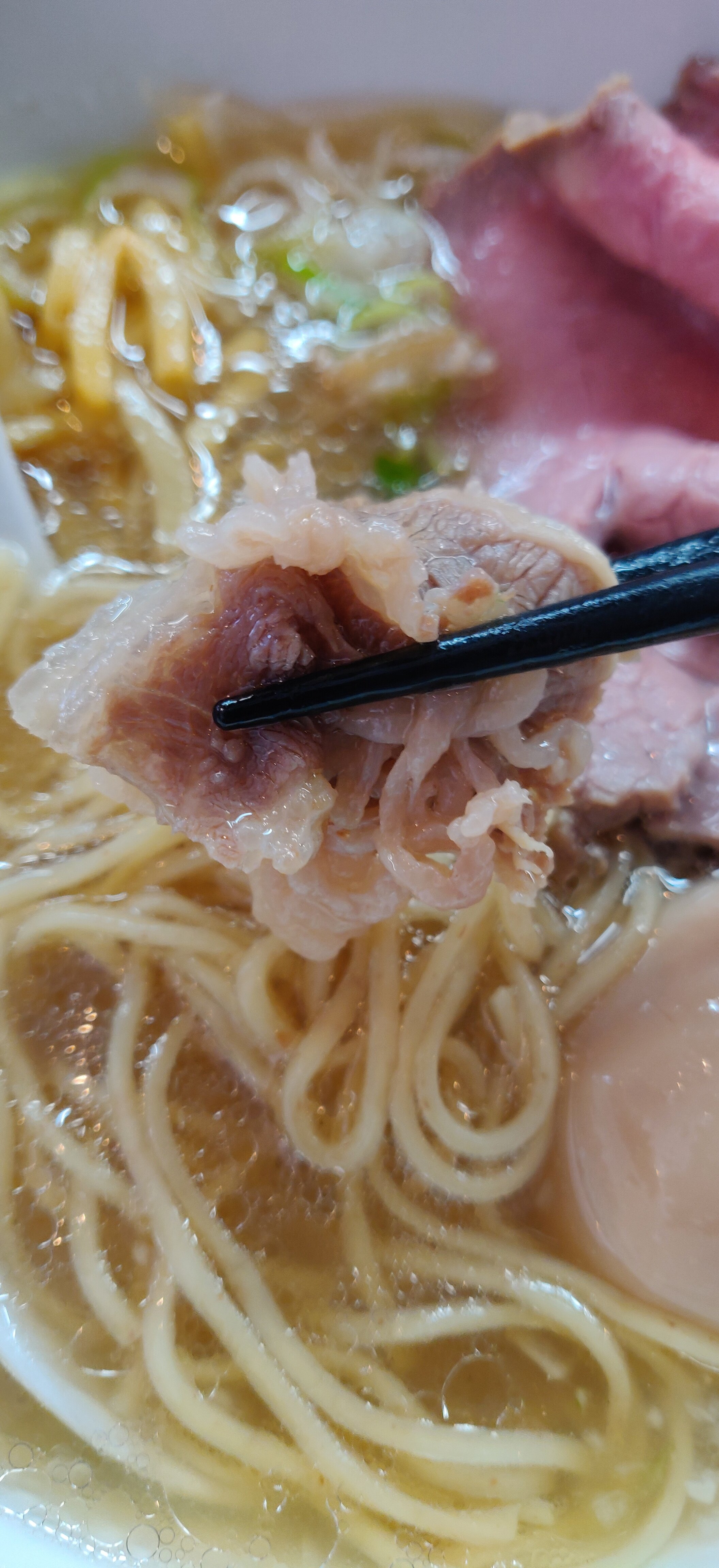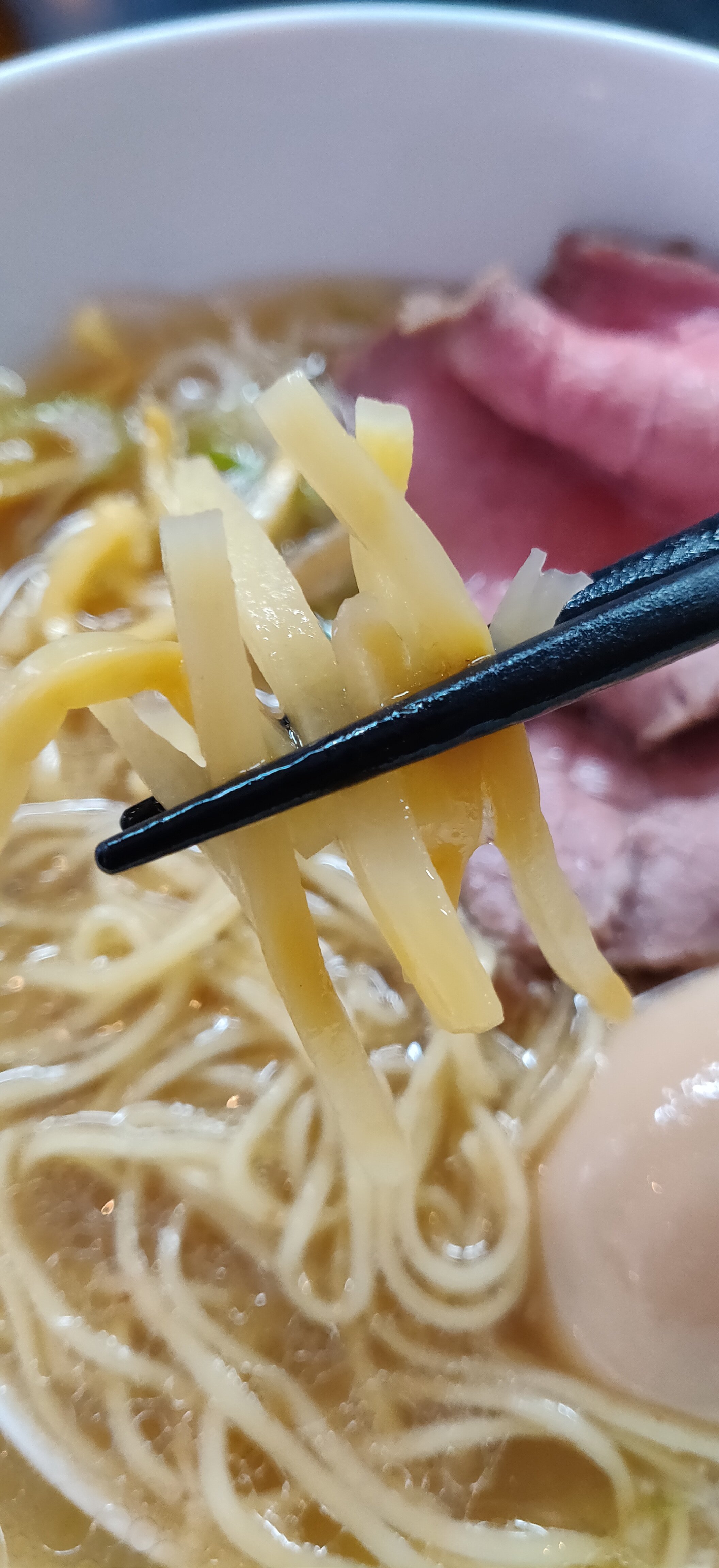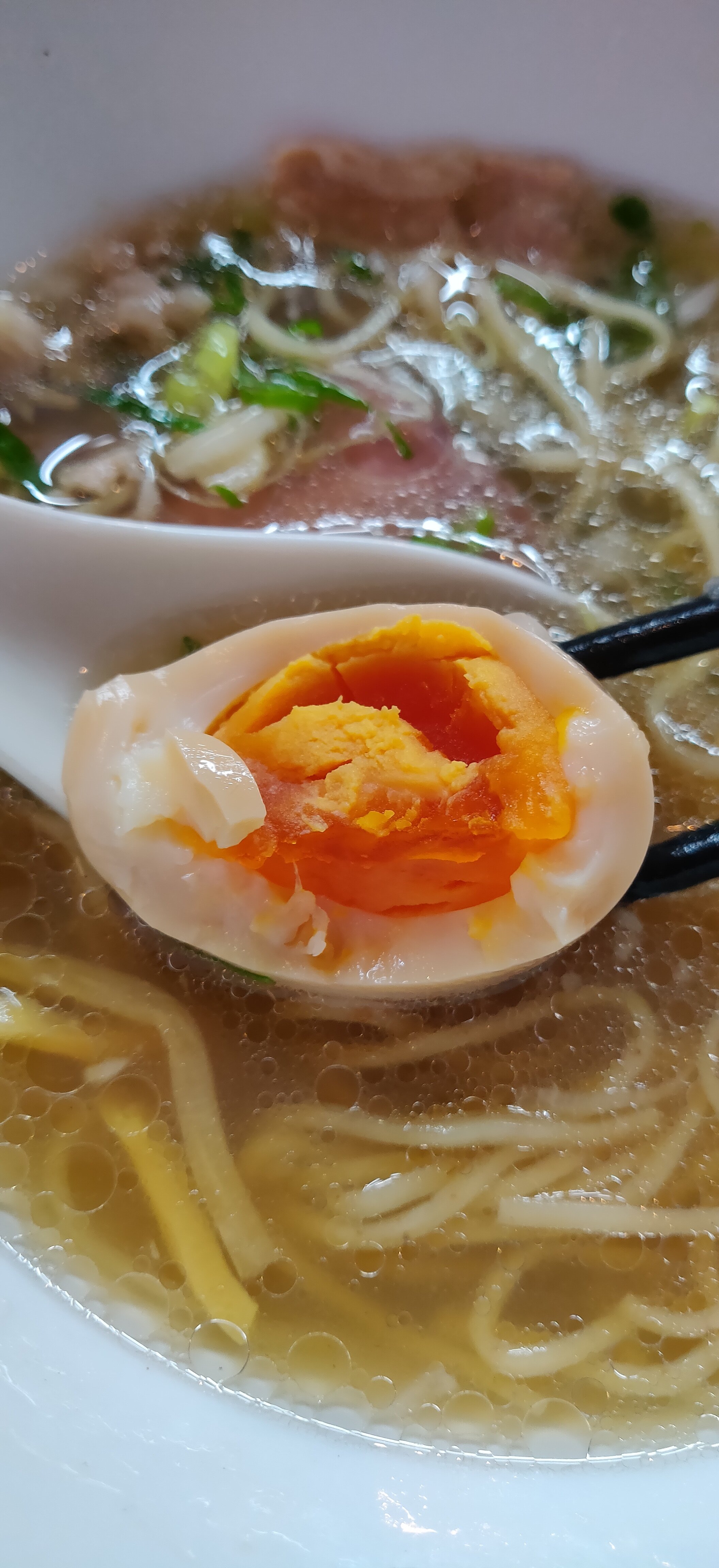Gyukotsu Ramen Matador (牛骨らぁ麺マタドール本店); Premium Beef Bone Broth Ramen, Kita-Senju, Tokyo
I’m not even gonna lie, it’s been so long since I’ve written a review that I forgot what the layout for my reviews even look like. I’ve been a bit lazy, but while organizing my ramen photos I realized I’m still eating countless bowls without writing enough reviews to catch up. So here I am, and I’m about to bang out a review every single day until Christmas so pull up your boot straps and get ready because I have a plethora of reviews coming at you. Starting off with one of my favorite bowls I’ve had in this unique beef bone broth variety is Gyukotsu Ramen Matador at their HQ location in Kita Senju. I’ve always heard such great things about Matador, but with most ramen shops, distance and convenience from my office and house play a huge role in my order of ramen priority. On this occasion, I dragged my good friend to come with me so I didn’t have to make the trip alone and we enjoyed their bowl together. The shop is a short 7 minute walk from Kita Senju station which you can access via a plethora of subway and train lines from the Hibiya line to the Sobu Skytree line. I’ll leave it up to you which line you use depending on where your starting location is, but I definitely recommend making the trip out here to see a different side of Tokyo while having an unique bowl of ramen with it.
One thing I despise most when walking in to ramen shops are choices. Chalk it up to my indecisive stomach, but I much rather walk in to a shop with one specialty and no time wasted scrolling through the menu than one with an infinte number of choices I have to decide from. While Matador does in fact have a ton of options, the chef makes sure to strongly recommend either the salt or shoyu version of his beef bone broth ramen for first timers. The tsukemen, abura soba (no soup ramen), and Taiwan maze soba (Taiwan style ramen) are for the regulars looking to give their taste buds a new sensation. Starting from the very top in red is the Shoyu Ramen in varying topping choices in correlation with the picture posted above. Second row in yellow is the Shio Ramen, or salt ramen, while the third row in blue indicates the Tsukemen option, again in varying topping options. Down near the bottom in green are the premium rice bowl choices of fine grade rice, raw egg over rice, a beef tendon stew over rice, and kalbi over rice on the next level down. The white buttons right below are for large noodles, marinated soft boiled egg, and extra grilled beef slices, while the yellow indicates an option for a bottle of beer to go along with your food. The bottom red buttons are the specialty menu items which will be posted outside should you choose to order it. As I mentioned earlier, my stomach can never make decisions when given a set of options so I persuaded my buddy to get the Shoyu while ordering the Shio for myself. It really does come down to just preference, but I highly suggest getting the one with most toppings on the very left, regardless of which flavor option you end up choosing, to get a full experience of what Matador has to offer. While the soup and noodles are fantastic, the toppings are no second fiddle, so splurge and go for that option.
So I’m not sure if I went on an understaffed day, but Matador is run by just one guy…the owner. His shop fits about 7-8 guests and he makes the bowls to order, so don’t be surprised if you end up waiting upwards of 30 minutes with only a few people ahead of you in line. Don’t let this fact deter you though as his meticulous dedication creating his bowls to order is something that makes the wait all the more worth it. From the moment I bought my ticket and sat down, it took about 15 minutes to receive my food. As you can see from the above photo, my wait was rewarded with a visually fantastic bowl.
The chef here heats each portion of soup individually while weighing out the noodle portions and throwing them in to the hot water cauldron. As the noodles and broth are being heated, he will pour his shio or shoyu tare (depending on your ramen option), adding a bit of fragrant oils before mixing them with the heated broth. Once the noodles are done, those are folded carefully in to the combined soup and topped with two huge slices of roast beef, some menma bamboo shoots, green onions, a bit of citrus rinds, and the soft boiled egg. Once you receive your bowl, you might be tempted to go straight from the scrumptious looking roast beef, but hold out and take some time to appreciate the soup.
A lazy description of this soup would be comparing it to the Vietnamese noodle dish Pho, but without all the herbs and spices. However, this comparison doesn’t do the soup justice. Hard to explain, but imagine a rich, deep flavor of aged steak in soup form. I’m not even joking when I say that the beef flavor in this soup surpasses that of most steakhouses. The Asian spice blend included when making the broth makes it more reminiscent of fine Korean BBQ beef flavors than a more traditional Western steakhouse, but it’s seriously on that level of exquisite flavors. The shio was perfect for my personal taste palette as I enjoy the ability of salt to enhance all the ingredients used in the broth. Not to say the Shoyu isn’t good (and it was, as I sneaked a couple spoonfuls from my buddy), but the salt made me feel some kinda way with how it was vibing in my mouth. What made the pairing of the salt so great was the combination of this soup with the roast beef slices. Look, having a bit of jus and soy sauce definitely enhances the experience of steak, but there is nothing like some fine flaky salt coating a nice medium rare bite to uplift the flavors of beef and this was exactly how this Shio based tare did to the soup. The soup coated the inside of my mouth was such amazing flavors that it was hard for me to stop, but I had to continue on with the rest of the bowl.
Next up was the special made noodles with specks of wheat flour mixed in. The wheat flour brings out a nice toasted, oat-y flavor to the dish that brings it back down to its core as a ramen. Shape is thin and squared which does a fantastic job of clinging the right ratio of soup to each bite. The citrus notes bring some acidity and balance the bowl by cutting through a bit of the oiliness and fattiness of the beef bone broth. Crispy, thin cut menma bamboo shoots are lightly seasoned and add a texture variety without interfering with the flavors of the broth. Green onions do the same while adding the freshness aspect to it. Only complaint was that the soft boiled egg wasn’t as soft boiled as I would have liked, but can’t order the tokusei, or all toppings, version without the egg added to it so can’t complain too much there. A nice touch was the bits of simmered beef tendons hidden within the soup. The roast beef itself doesn’t have much fat to it and is quite a lean slab of meat, but the tendon adds some collagen and rich, fatty notes to the dish while maintaining the beef theme of the bowl.
All and all I am so glad I made the trek out here to the east side of Tokyo to experience this amazing bowl. You don’t see a ton of nationally recognized beef bone broth based (the alliteration!) ramen in central Tokyo and is something that really requires a high level of skill to pull off. The clean, clear soup is beautiful to gaze at and even better to taste. If you’re finding the tonkotsus, chicken, and fish based broths a bit monotonous, make your way to Kita Senju and give your taste buds a new shocking flavor to experience. Experience a bit of the shotengai (old school Japanese shopping street) here as well and get a full, well rounded Japanese experience.



